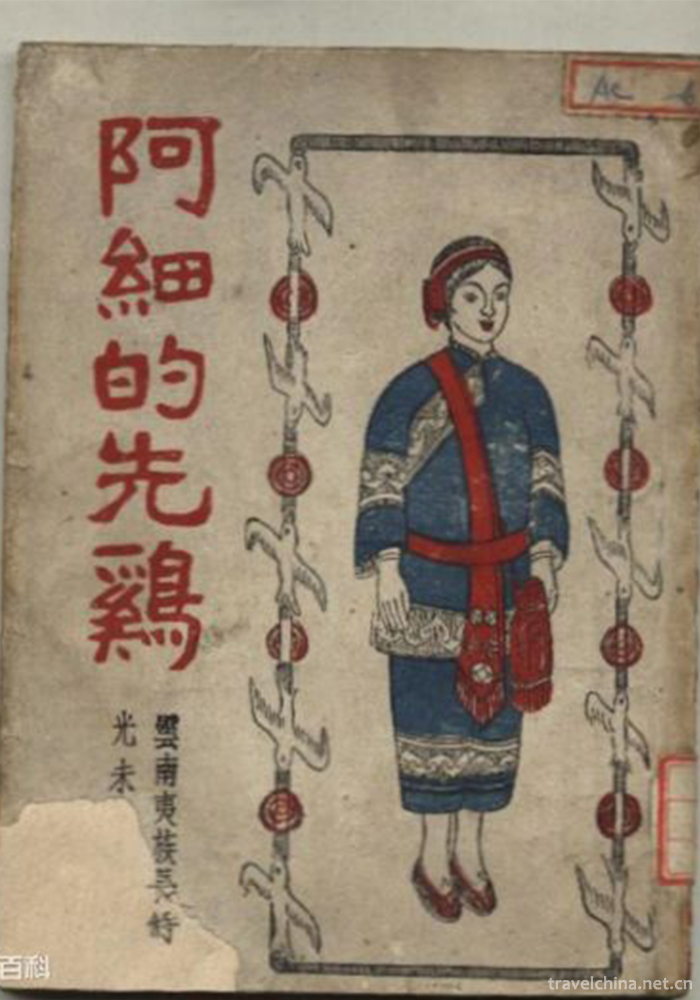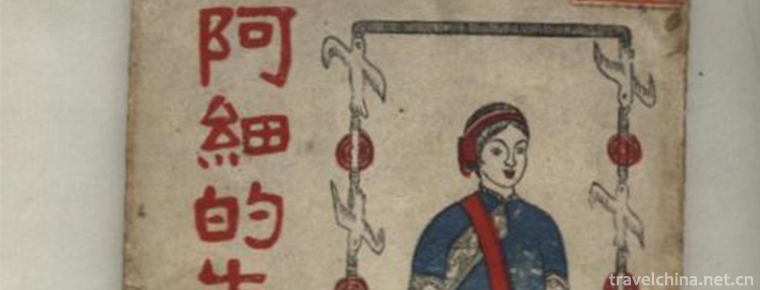Ah Xi Xian Ji
Ah Xi Xian Ji
"Xianji" is an epic of the Ashi people of the Yi tribe, which is spread orally among the Ashi people in the Xishan area of Maile City, Yunnan Province. "Xianji" is the transliteration of "sei ji" in the Ashi language, meaning "song", and is the general name of the poems and tunes of this work. The whole poem is divided into two parts. The first part, "the oldest time", describes the origin of the universe and the early customs of human life. The second part, "Men and women say that they are one family", narrates the unique marriage and customs of the Ashi people, which has the significance of inheritance.
In May 2011, the "A Xixianji" declared by Maile County of Yunnan Province was listed in the third batch of national intangible cultural heritage list with the approval of the State Council.
historical origin
The Creation Epic of the Axi people, a branch of the Yi nationality in China. It is spread in the Xishan area of Maile City, Yunnan Province. Sing in a fixed tone. Guang Wei-ran had been sorted out and published between 1943 and 1944. The title of the book is "A thin chicken (base)".
primary coverage
"Xianji" means a song or song in Ashi. The whole poem is divided into two parts. The first part, "the oldest time", describes the origin of the universe and the early customs of human life. The second part, "Men and women say that they are one family", narrates the unique marriage and customs of the Ashi people, which has the significance of inheritance.
There are a lot of materials about "pre-base". Different singers from different places have different choices in their singing.
Streamlining
In dealing with the differences in the statement of the same event and the description of the details, we should consider the epochal and national characteristics reflected in the epic, and pay attention to the use of the most ancient and national characteristics of the Asians.
Notice the difference between essence and dross.
The repetition and procrastination in some parts of the original poem are simplified.
The original poems are all five-character rhyme poems. The translated Chinese has formed long and short sentences. The language has been appropriately processed and rhymed as far as possible under the premise of expressing one's feelings and feelings.
There is no title in the original poem, and the title is added to the poem. Under each sub-title, the poem is divided into sections.
Basic structure
Introduction to Ahsien's Xianji
The oldest time
Creation of heaven and earth, creation of man
How do they live?
Generations in the Three Worlds
Quarter years, crops
Five houses, sacrifices to gods
Men and women say they are one family.
How sad I am
The road to a duet tune can't be broken
Three paved the way for love
Fourth, let's go up to the mountain.
Fifth, like the rainbow in the sky, life and death will never be separated
Six of us two ah! It's already a couple.
7. Planting crops on wasteland
Eight was dressed in linen
Nine goes out to sell workers
10 Home to Harvest Crops
11 Let our children grow crops
artistic characteristics
The content of traditional poems sung with "Xianji" is basically fixed and systematic, which constitutes a complete narrative poem. On the eve of liberation and after liberation, the Ashi people also sang many poems eulogizing revolutionary struggle and socialist construction by using the "pre-foundation". However, from the content and structure of the poems, they are other works, which have no organic connection with the ancient narrative poems.
Inheritance value
Long poems have a wide range of contents. They vividly and vividly reflect the different aspects of life of the Ahsi people in different stages from primitive society to class society. They are interwoven with myth and reality, and integrate ideals and facts. They are both literature and history. In 1959, a new edition of A Xianji was published.


-
1.QomolangmaEverest
Mount Qomolangma (Mount Qomolangma) is the main peak of the Himalayas and the highest mountain in the world. It is located on the border between China and Nepal. The peak is located in China
Time 2018-10-30 -
2.Tiantangzhai Tourist Scenic Area
Tiantangzhai (National AAAAA Tourist Scenic Spot, National Nature Reserve, National Forest Park and National Geological Park) is the second peak of the Dabie Mountains
Time 2018-12-08 -
3.Strange slope Scenic Area
Weipo Scenic Spot is located at the foot of Maoshan Mountain in Qingshuitai Town, Xinchengzi District, Shenyang City, Liaoning Province, facing the wilderness, backed by mountains
Time 2019-01-12 -
4.Production Techniques of Flower Tea
Jasmine tea, also known as jasmine fragrance, is the tea and jasmine flowers to blend, bass, so that tea leaves absorb flower fragrance into tea, tea fragrance and jasmine fragrance interactively inte
Time 2019-05-04 -
5.Paper cut art
Chinese paper-cut is a kind of folk art that uses scissors or carving knives to cut patterns on paper, to decorate life or to cooperate with other folk activities. In China
Time 2019-05-05 -
6.March 3rd Festival of Li Nationality
The third day of March (the third day of the third month of the third lunar month) is the grandest traditional folk festival of the Li people in Hainan Province. It is also a beautiful day for the you
Time 2019-05-12 -
7.The legend of Qiren worrying about heaven
On November 11, 2014, the legend of Qiren worrying about heaven was approved by the State Council to be included in the fourth batch of national intangible cultural heritage list.
Time 2019-06-10 -
8.Ring Dance of Yi Nationality
Ling Dance of the Yi Nationality, to be known as foot-jumping, is called "Qi He Zhe" in the Yi language, which means the spiritual farewell dance. It is a traditional folk dance performed an
Time 2019-07-12 -
9.Diagnosis of Traditional Chinese Medicine
Diagnosis of traditional Chinese medicine, one of the traditional Chinese medicine, is declared by the Chinese Academy of Traditional Chinese Medicine, one of the national intangible cultural heritage
Time 2019-08-10 -
10.Beijing Institute Of Technology
Beijing Polytechnic University was born in Yan'an in 1940. It is the first university of science and engineering founded by the Communist Party of China. It has been one of the key universities in Chi
Time 2019-09-06 -
11.Climate of Yibin
Yibin City has a humid monsoon climate in the middle subtropics, and the low hills and river valleys have the climate attributes of south subtropics. It has the characteristics of mild climate, abundant heat, abundant rainfall, suitable illumination, long fr
Time 2020-12-18 -
12.Yibin economy
In 2019, Yibin City will realize a GDP of 260.189 billion yuan, an increase of 8.8% over the previous year in terms of comparable prices. Among them, the added value of the primary industry was 27.764 billion yuan, an increase of 2.9%; the add
Time 2020-12-18